When you are renovating your home, one of the biggest decisions to make is the type of flooring you will use. Perhaps you have narrowed it down to wood flooring. But with so many options, what type of wood flooring will be best for you?
In this article, you will find information on wood flooring that can help you to decide on the type best suited for your home and your needs. So read on to learn more about types of wood flooring.
Table of Contents
What Are The Different Types of Wood Flooring?
Many different trees are suitable for making floorboards. Which is best for you depends on the finish you are after. Most types are also available as solid wood or engineered wood flooring. We will explain the difference between these two later in the article.
1. Oak
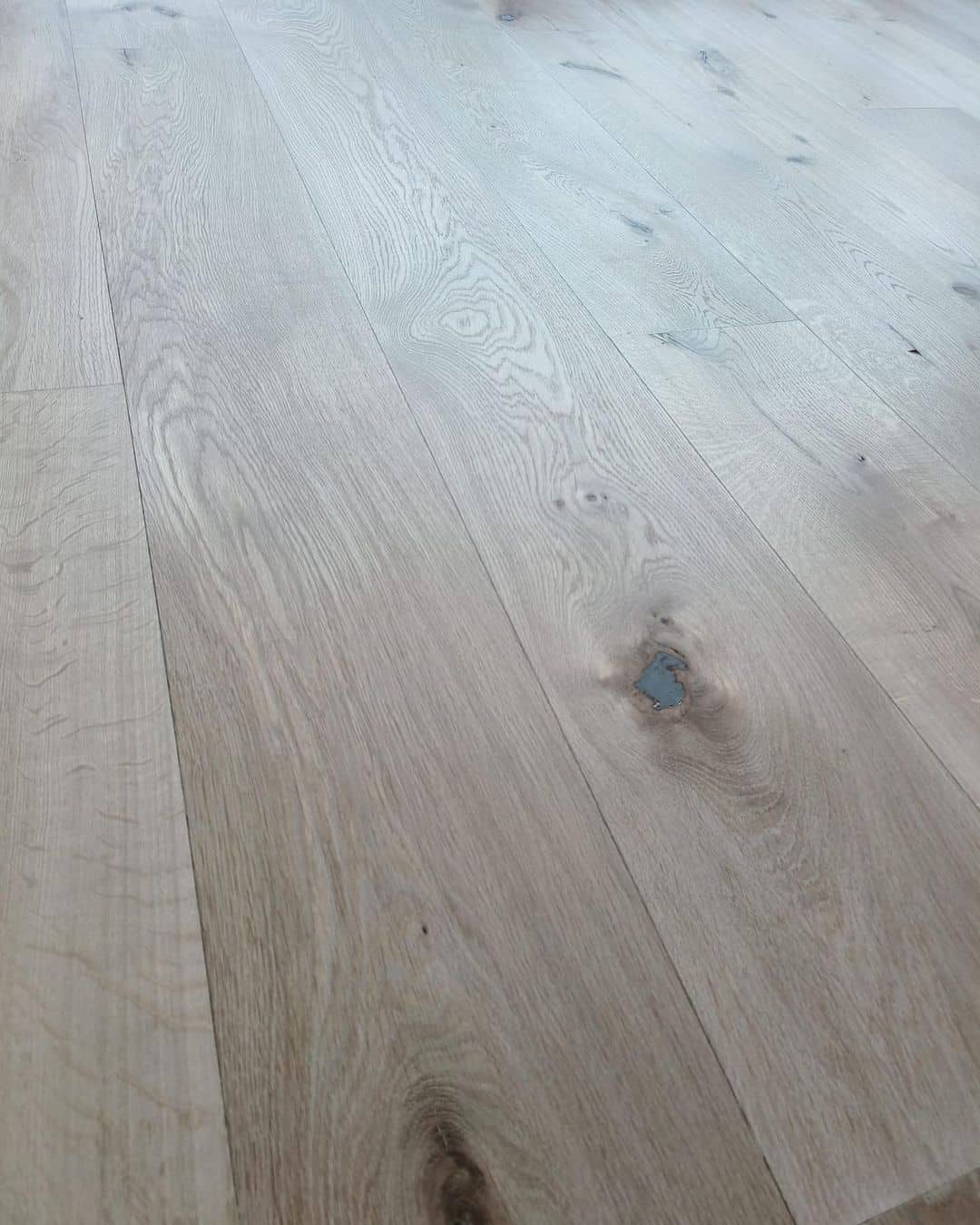
southerncrossflooring
Oak is one of the most popular choices for hardwood flooring and comes in two types which are white oak and red oak. Flooring made from red oak has a warmer tone and the planks have red, pinkish, or rust undertones. The flooring has a lot of character and a decent amount of grain variation.
White oak has a gray-green, cooler tone and the grain is more uniform and smoother in appearance. Some find that white oak has less variation and character than red oak flooring. However, both are great options for floorboards. White oak scores 1360 and red oak 1290 on the Janka hardness scale.
2. Ash
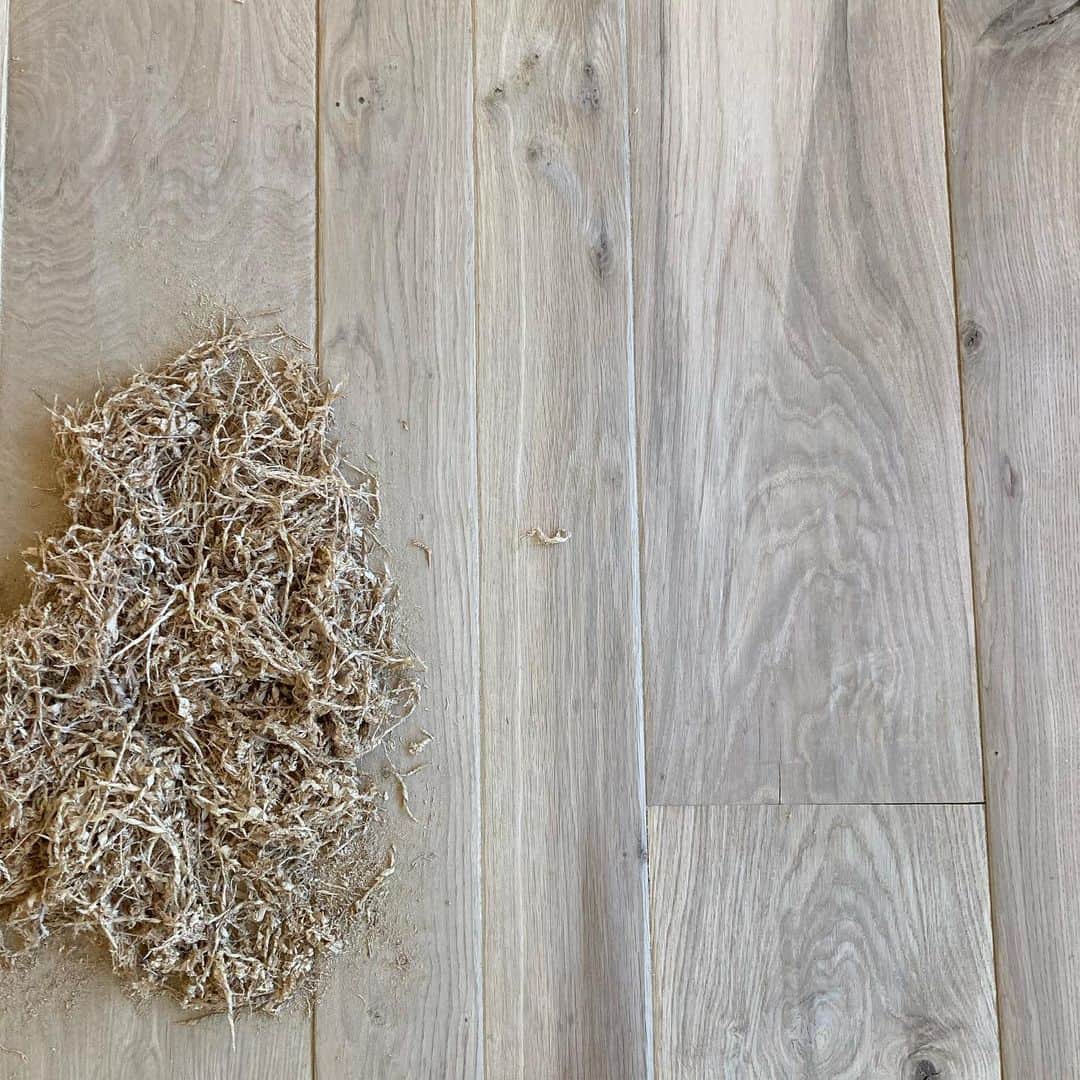
jwra_architecture
Ash flooring is popular in modern designs because of its light grain. It has a Janka rating of 1320. It has an excellent ability to absorb a stain which makes it versatile and easier to customize than many other types of wood flooring.
3. American Walnut
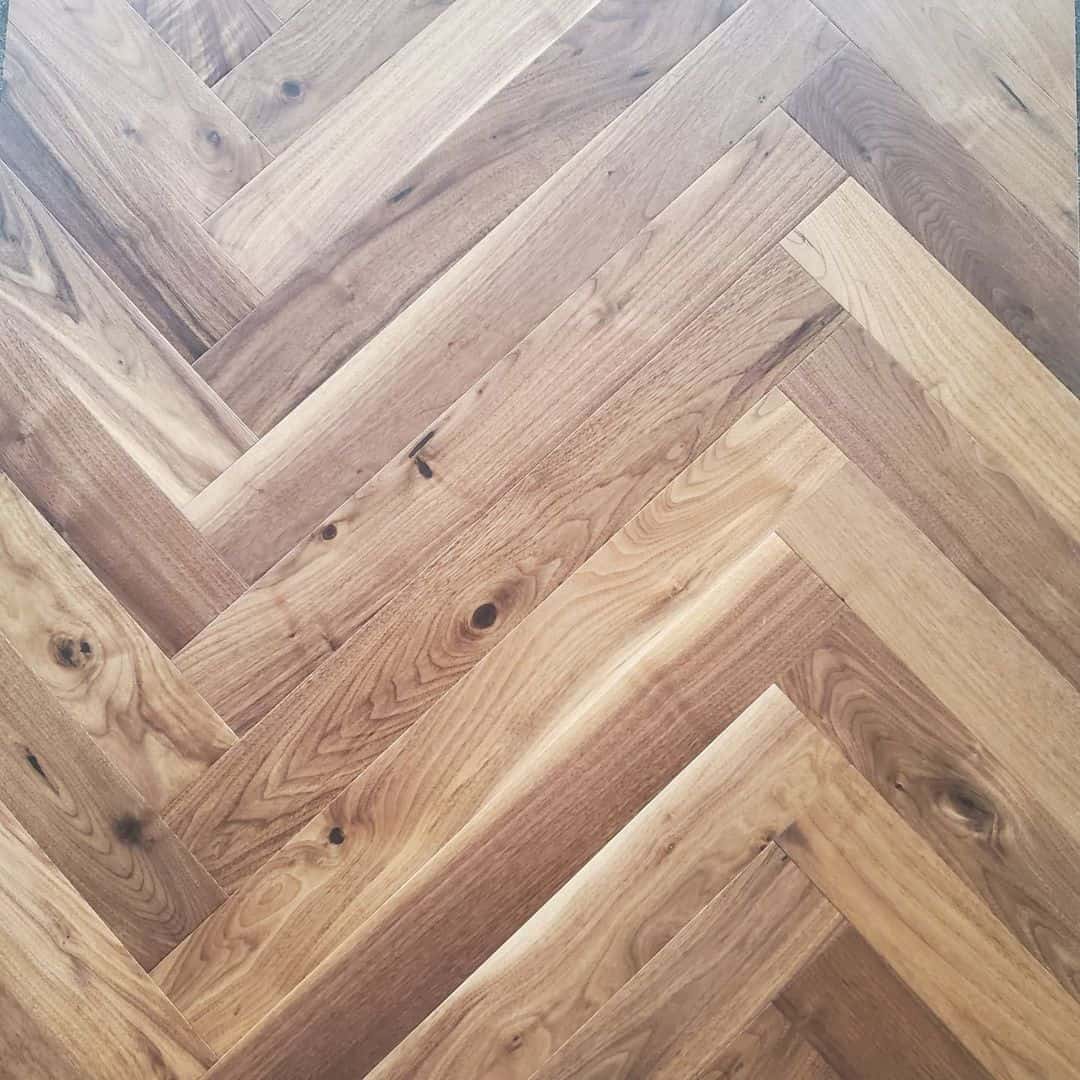
eckowoodfloors
Having a Janka rating of 1010, walnut is one of the softer options for hardwood flooring. It has a rich brown chocolaty color and its graining is beautifully detailed. Note that the American walnut tree is different from the Brazilian walnut tree.
4. Maple
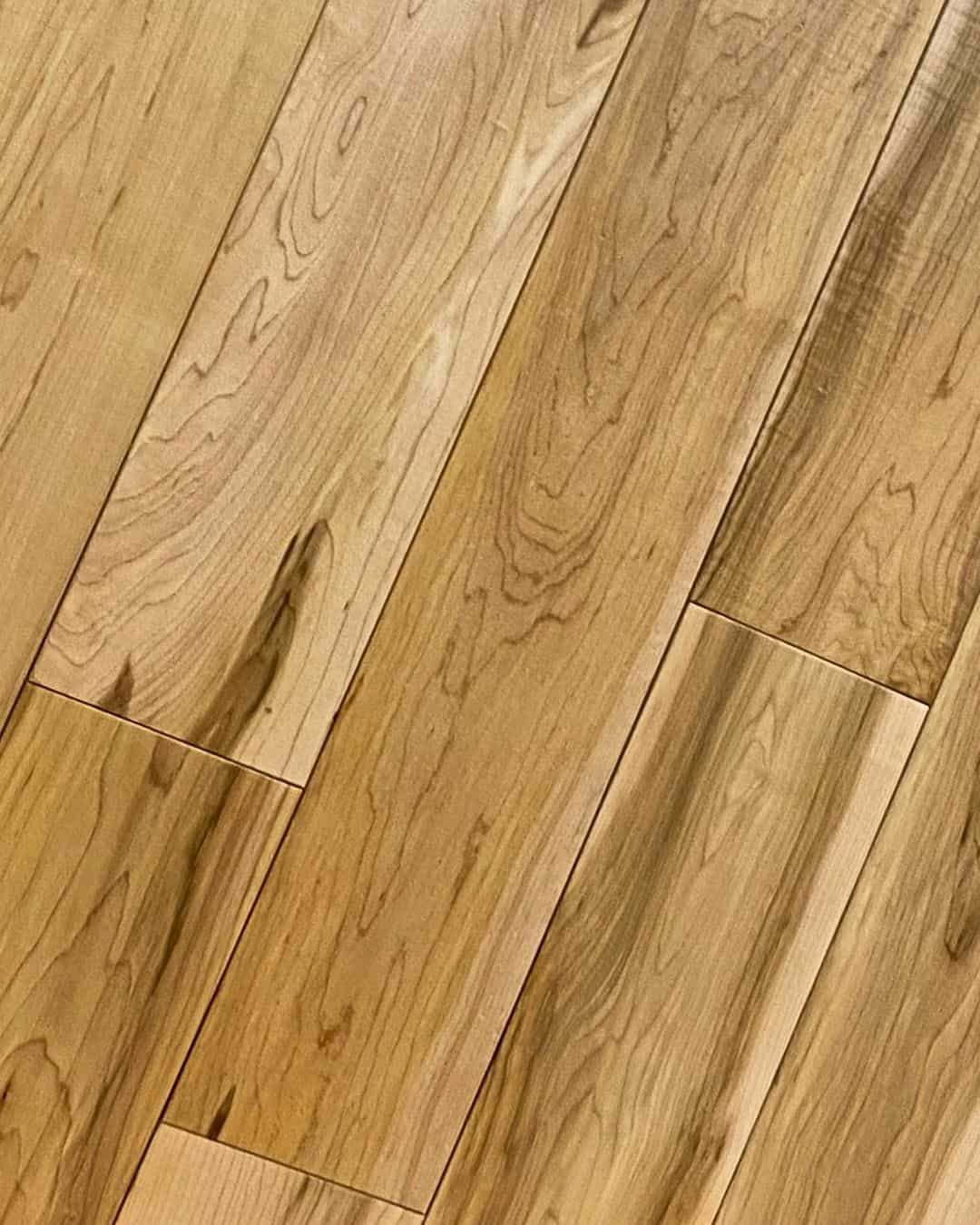
methodarchstudio
Maple flooring is the second most popular after oak. It comes in different tones from creamy white to reddish brown and has a subdued fine grain. Maple scores 1450 on the Janka rating, which makes it great for households with children and pets. However, it doesn’t stain very well except with neutral finishes.
5. Hickory
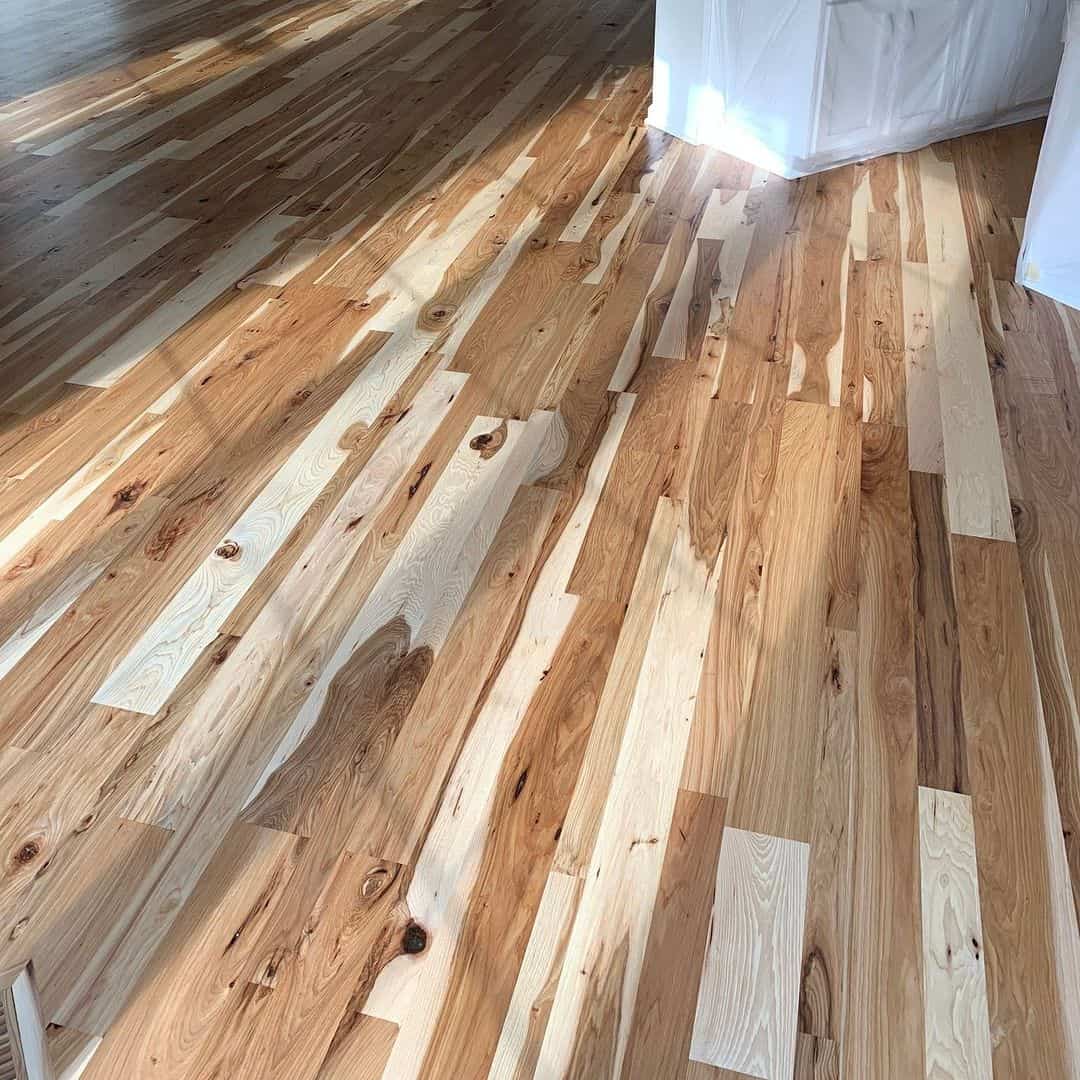
seelhardwoodfloors
Hickory hardwood floors come with a lot of character. They have a complex and varied grain which is best seen in wide, long planks. It is one of the hardest types of hardwood floors with a rating of 1820 on the Janka scale.
6. Mahogany
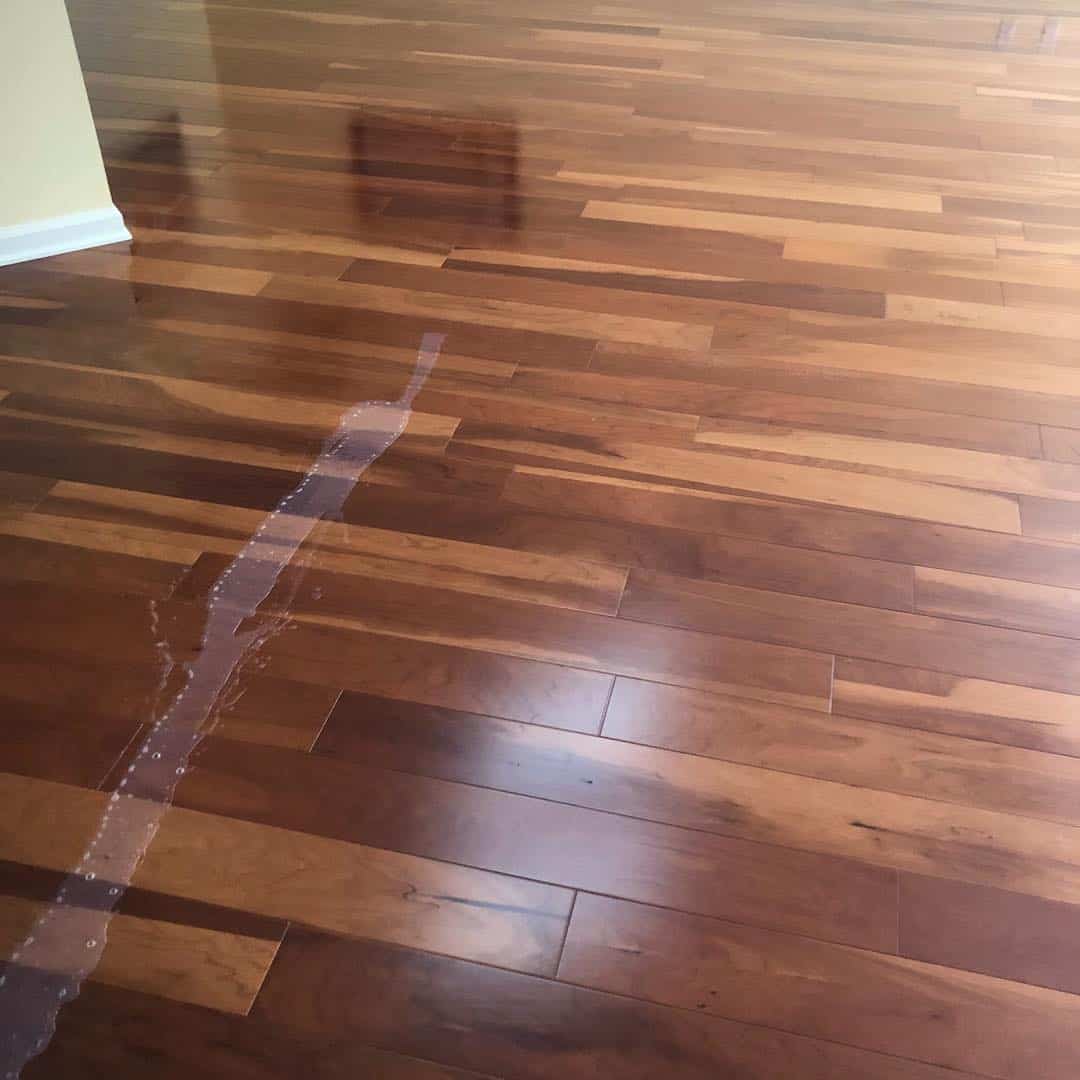
bambamflooring
Mahogany is an imported wood flooring and therefore more expensive than flooring from trees that are native to the country. It has a wavy grain and its tone is warm and rich. Some people feel mahogany is old-fashioned and therefore not the best choice for contemporary homes. Genuine mahogany has a 2697 rating on the Janka scale.
7. Teak
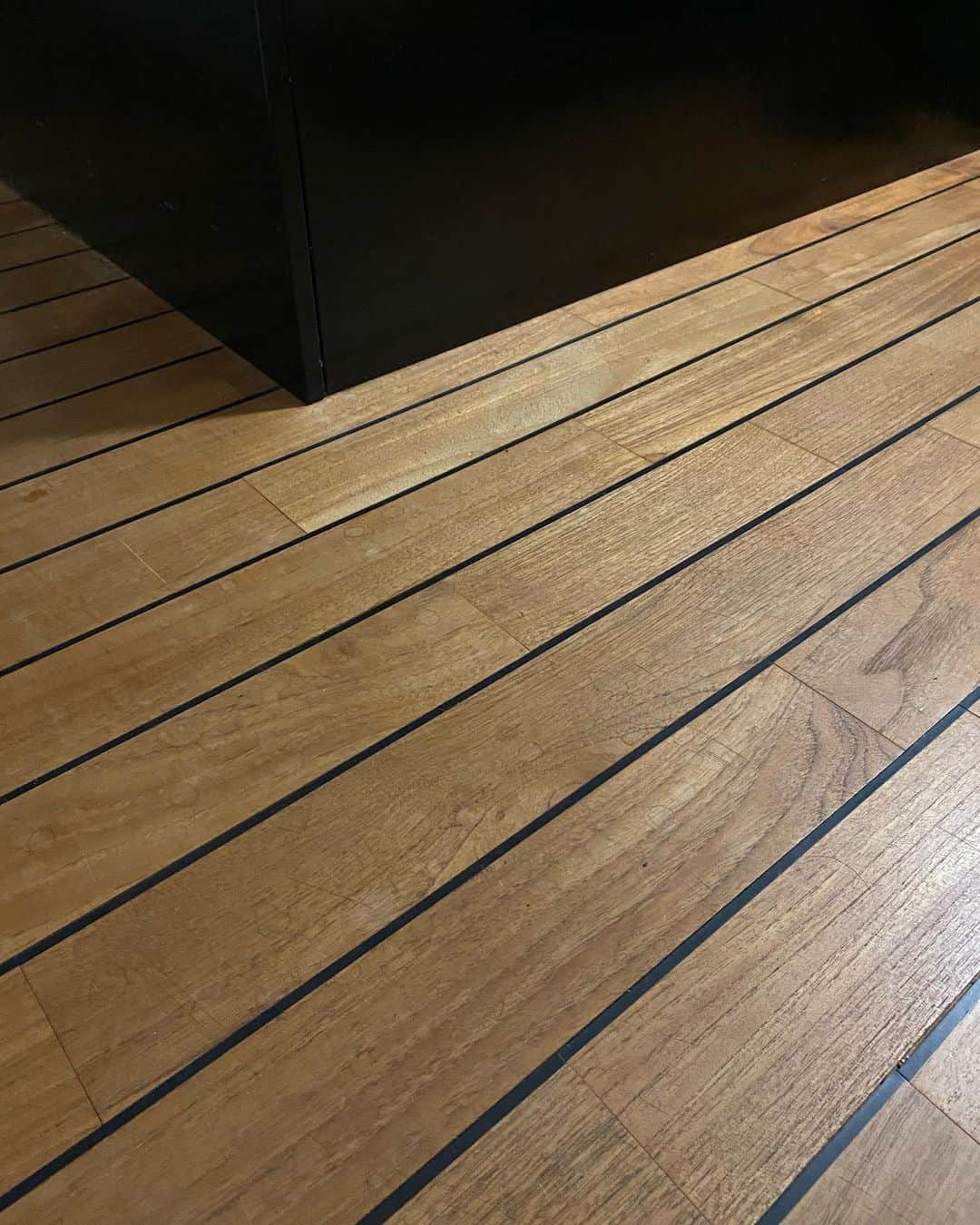
arbao_33
Similarly to mahogany, teak is imported to the US and many western countries. It has a lot of natural oils that give it a natural shine. Teak rates 2330 on the Janka rating and is well suited for families with children or pets. Teak is illegally harvested in places, so ensure you know where the wood comes from.
8. Pine
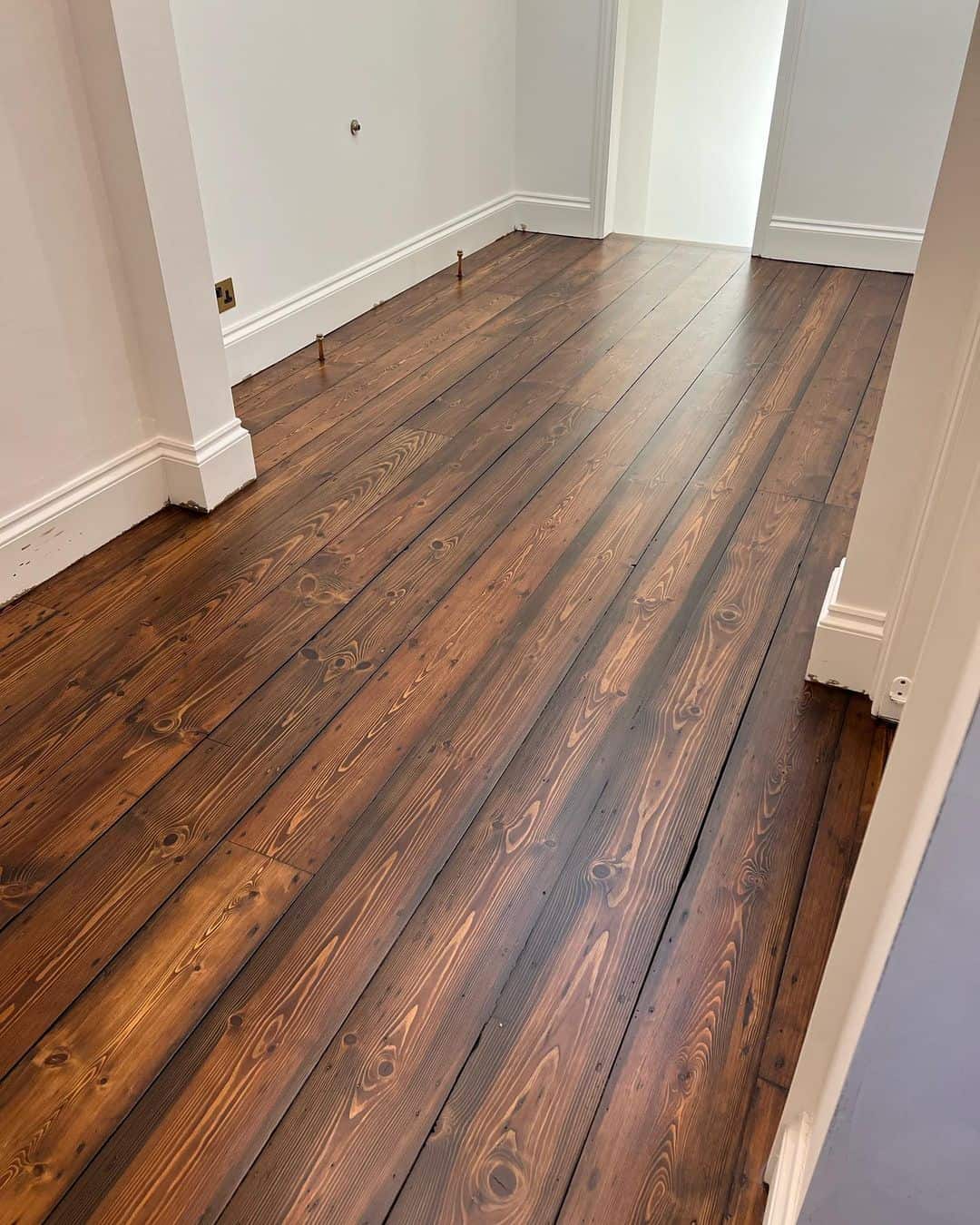
Unlike the other types of wood flooring listed here, pine is softwood, not hardwood. It has a knotty grain pattern and a rustic finish, which makes it a popular choice for floorboards. It has a Janka rating of 1225.
9. Cherry

schenckandcompany
Cherry is popular, albeit fairly expensive flooring choice. One of the drawbacks of cherry is its photosensitivity which makes it liable to darken after installation. Because of its low Janka rating of 950, cherry is vulnerable to dents and warping. However, it is an attractive flooring option with swirling grains and a reddish-brown tone.
10. Bamboo
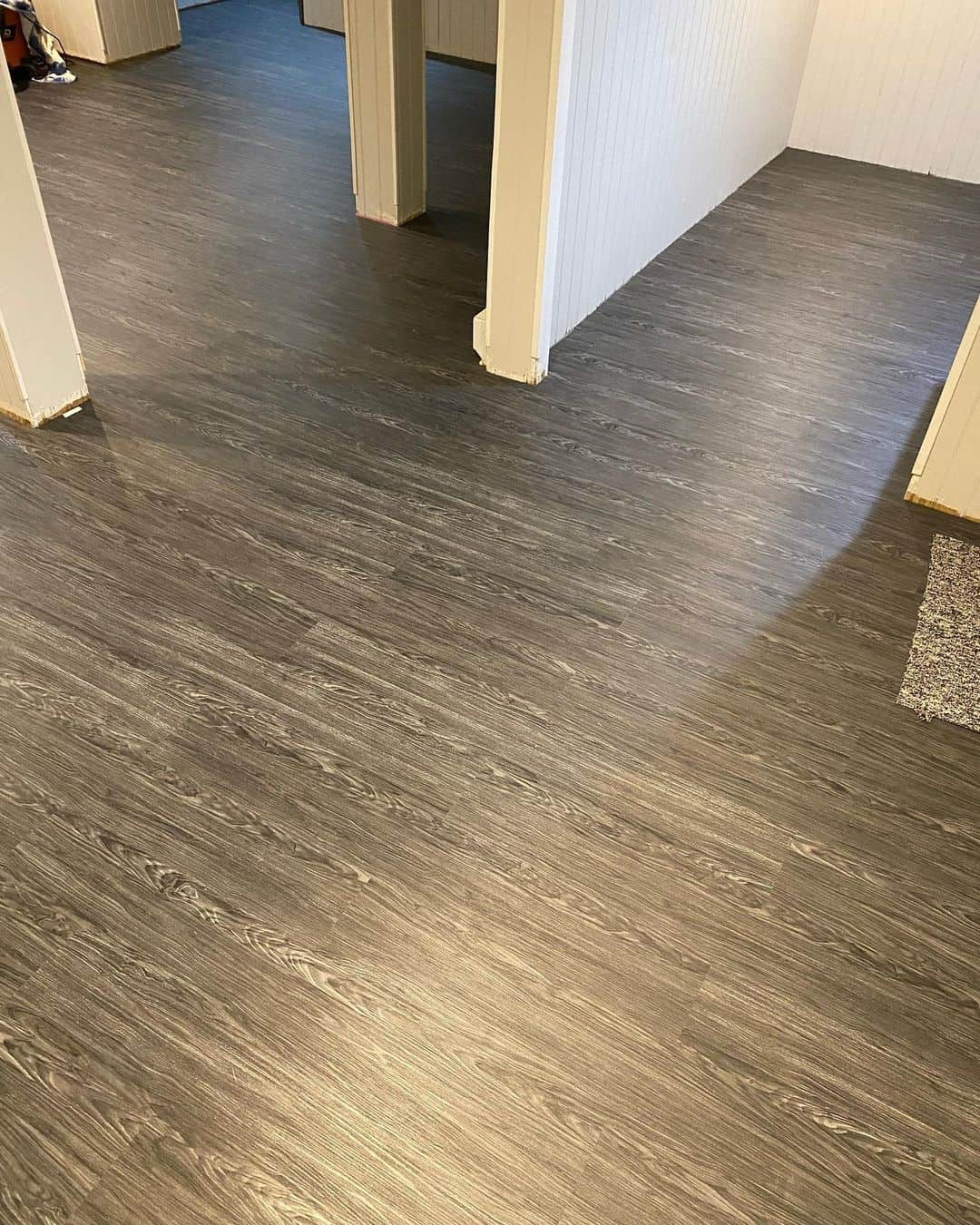
allfloors_inc
Strictly speaking, bamboo is not wood but grass. However, it is generally included as a wood flooring option because it looks like wood. Bamboo flooring is cheaper than most natural woods but also harder, rating 1600-1900 on the Janka scale. It is a fast-growing plant, which makes it a more sustainable option than real wood flooring.
What is The Difference Between Solid and Engineered Wood Flooring?
Solid wood flooring and engineered wood flooring are the two main categories wood floors are divided into. Solid wood flooring is made from one piece of wood while engineered wood has different layers. The veneer layer is a thin layer of solid wood, which is then glued over a high-density or rigid plywood core.
The two types come in different sizes. Strips of solid wood usually measure 1½ and 2½ inches in width and planks are four to eight inches wide. Engineered wood often comes in wider widths, up to twelve inches, and sometimes even wider because it is not as susceptible to warping as solid wood planks.
Most solid wood flooring planks or strips are ¾ inch thick, while engineerëd wood flooring ranges from ½ to ⅜ of an inch thick.
Pros And Cons of Solid Wood Floors
One of the definite advantages of solid wood floorings is that they can be refinished several times. When the floorboards show signs of aging like scratches, discoloring, or dents, you can sand them and apply a new finish. When taken proper care of, solid wood floors can last a lifetime.
Most solid wood floorings offer a range of options to customize to meet your requirements. You can choose between different wood species, different cut patterns, and different finishes. The versatility of solid wood flooring has ensured its lasting popularity despite so many alternatives on the market.
One of the main disadvantages of solid wood flooring is its vulnerability to moisture, humidity, and extreme temperature changes. This is why solid wood flooring is not recommended for bathrooms or kitchens. Solid wood floorboards are also almost always more expensive than engineered wood floorboards.
Pros and Cons of Engineered Wood Floors
Because engineered wood floors only use solid wood as a thin top layer, the boards are not as susceptible to temperature, moisture, or humidity. This makes it more suitable for spaces such as the bathroom, kitchen, or mudrooms. If you are looking for a wood floor finish on a restricted budget, engineered flooring is usually the cheaper option.
However, this is not always the case. Engineered wood floors with an exotic wood top layer such as teak can be similarly priced as, for example, oak flooring. This is because oak is a native wood and is more easily available.
Despite being a better option for rooms that have high humidity and moisture, there are better options for your bathroom than engineered wood floors. Although it handles humid conditions better, it is not waterproof and you might prefer, for example, vinyl flooring or laminate flooring.
Even though solid wood flooring is often more expensive to purchase, it can be the cheaper option in the long run because it can be sanded and refinished many times. Since engineered boards only have a thin solid wood layer, even high-quality ones can only be sanded a few times.
What to Consider Before You Choose a Type of Wood Flooring
There are some important factors you need to consider when choosing which type of wood flooring to install in your home.
Does it Have Good Humidity And Moisture Resistance?
This factor is especially important if you live in a humid climate or if you are installing the wood floor in a space that has high humidity such as your bathroom. Solid hardwood flooring is always going to be more vulnerable to damage from humidity, heat, and moisture than engineered wood flooring.
Natural wood will also react to temperature changes, which can cause warping. Therefore the expansion rate needs to be taken into account when installing the floor. Engineered flooring does not have the same issue.
How Hard is The Wood
The harder the wood’s rating is on the Janka scale, the more durable the flooring is. Types of wood flooring that have a high rating and therefore higher durability are better in rooms where there is a lot of foot traffic or heavy furniture. They are also better for households with kids and pets because they are more resistant to scratches and dents.
Is The Wood Photosensitive?
All wood floors are susceptible to color changes when exposed to sunlight. However, how much the color will change depends on how photosensitive the wood is. If you are choosing a wood floor for a room that gets a lot of sunlight, woods with low photosensitivity are better.
For more guidance on how to choose the right flooring for your home, you can watch this video.
Summary
Wood flooring types are divided into two main categories depending on whether they are solid wood or engineered floorboards. While solid wood planks are made fully from a single piece of wood, engineered flooring only uses solid wood as the top layer.
The prices of wood flooring can vary greatly depending on the type of wood used, whether it is from imported or domestic species. When choosing your flooring, it is important to consider the humidity of the room, expansion due to temperature changes, and how much direct sunlight the room gets.
Hopefully, this article has answered all your questions about types of wood flooring. However, if there is anything else you would like to know about them, write your questions in the comments section.